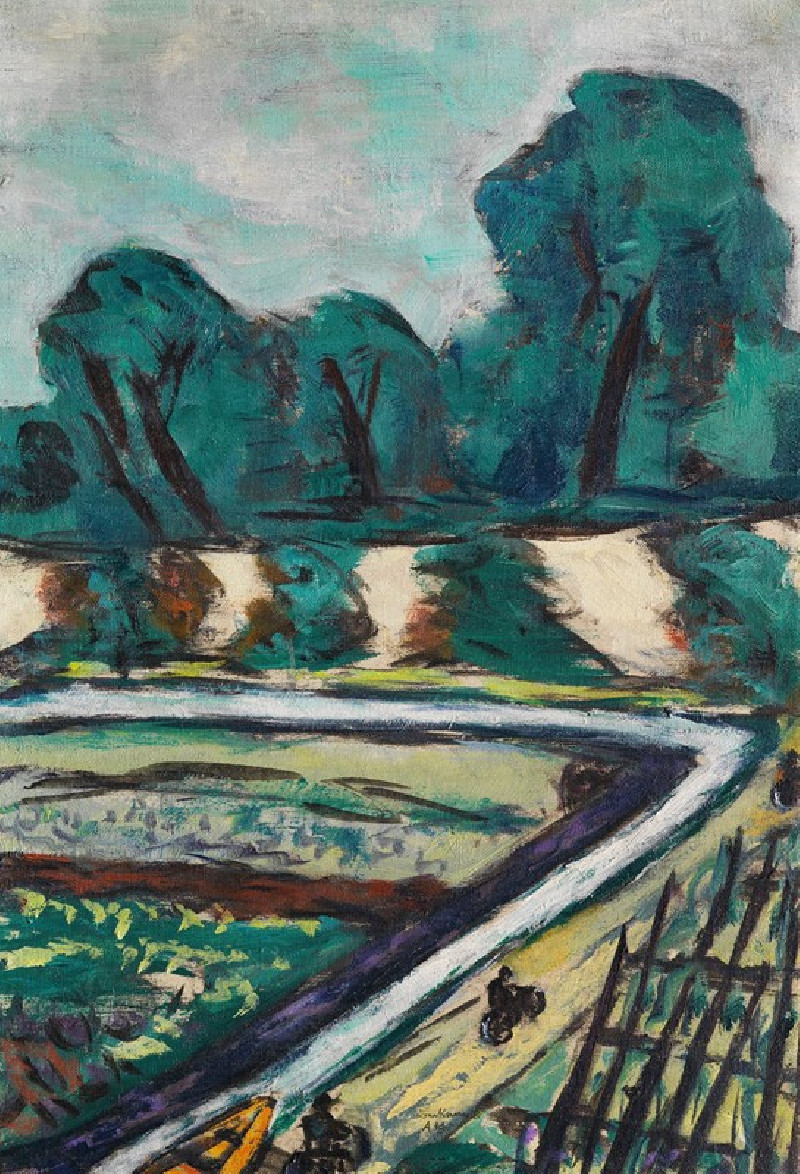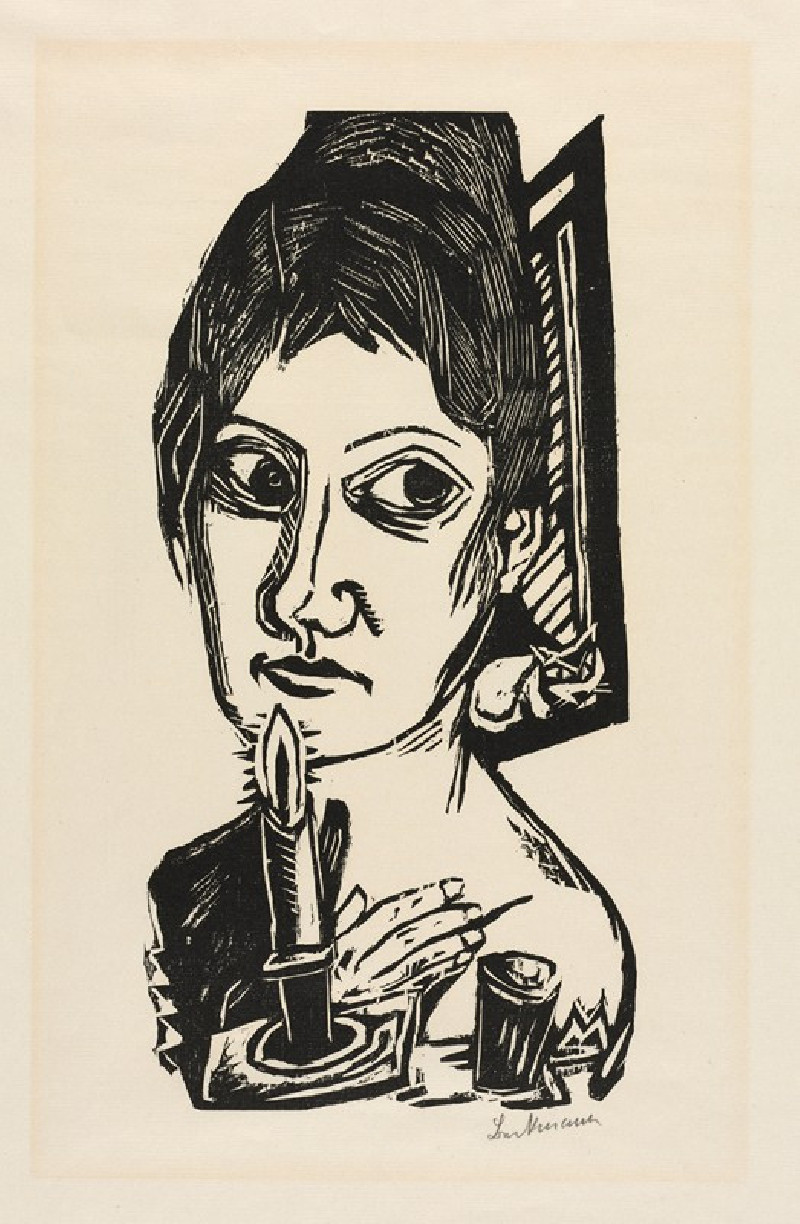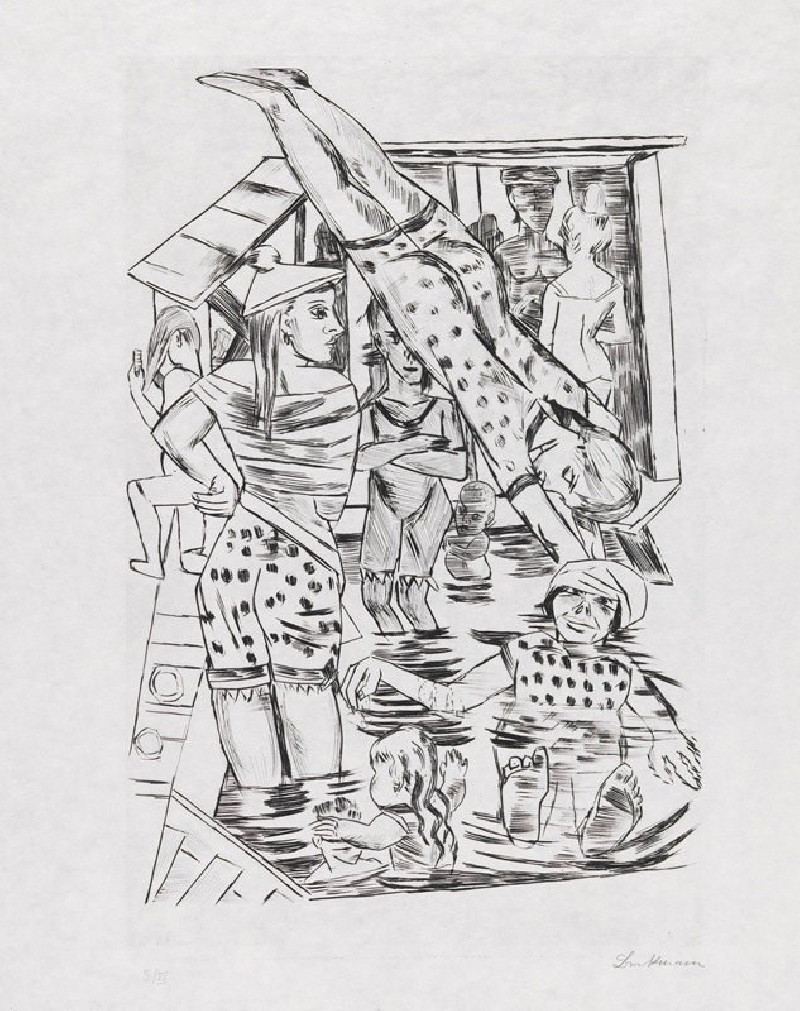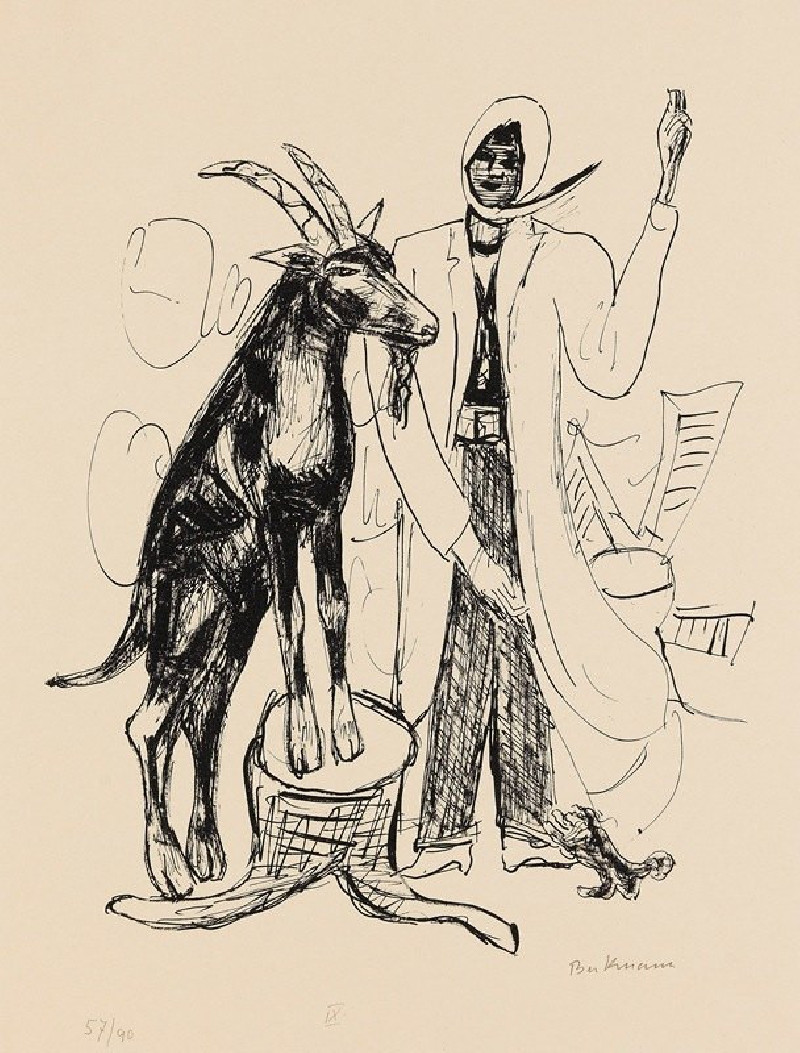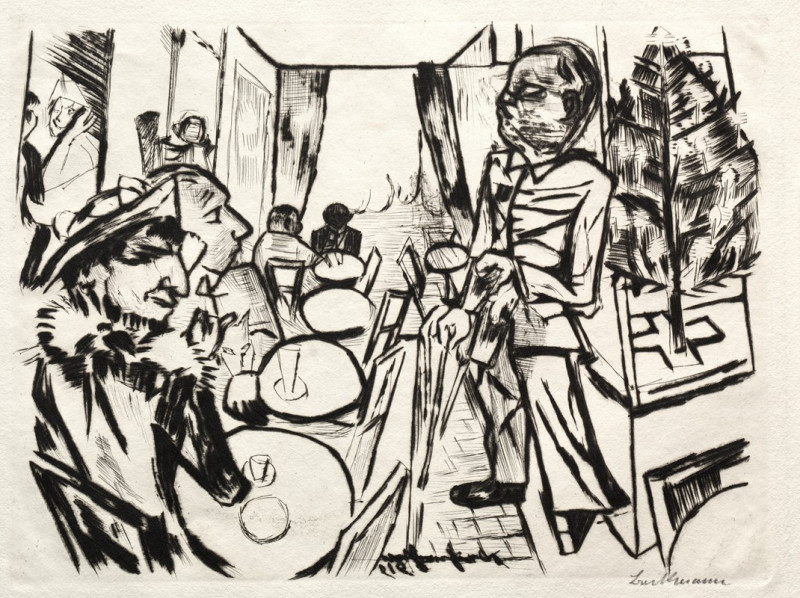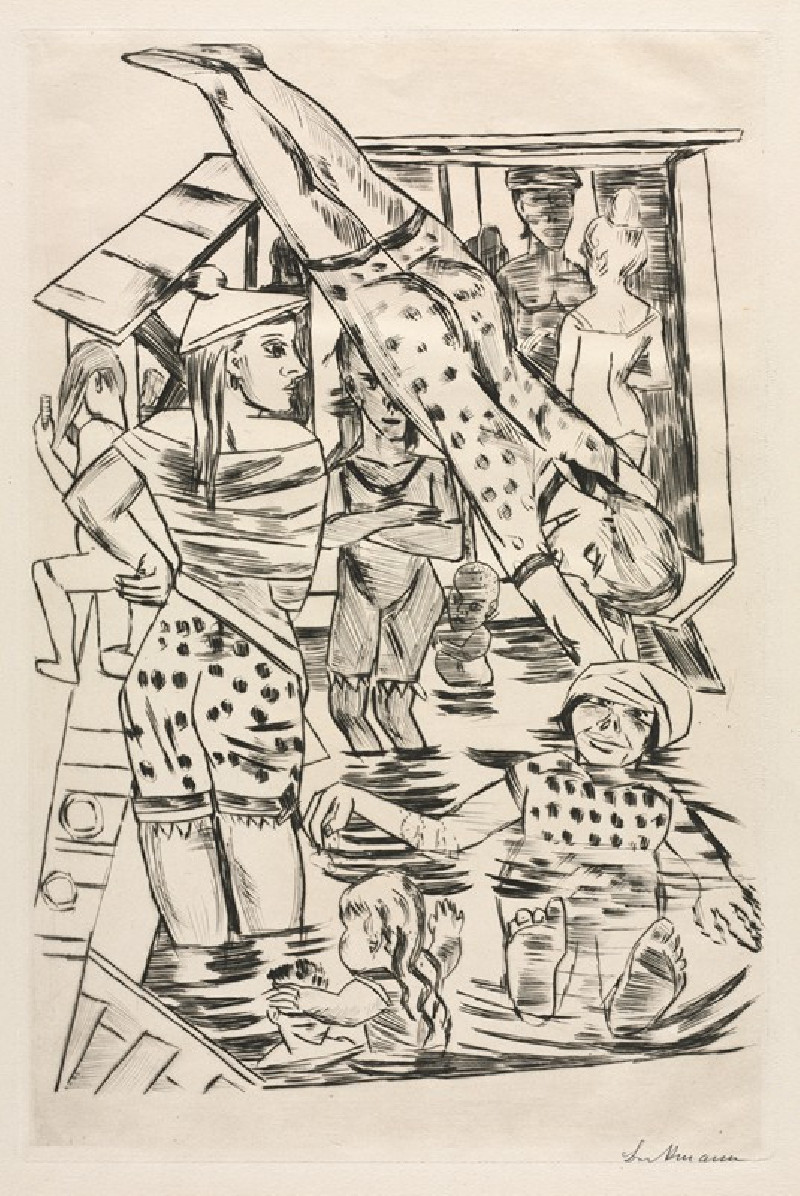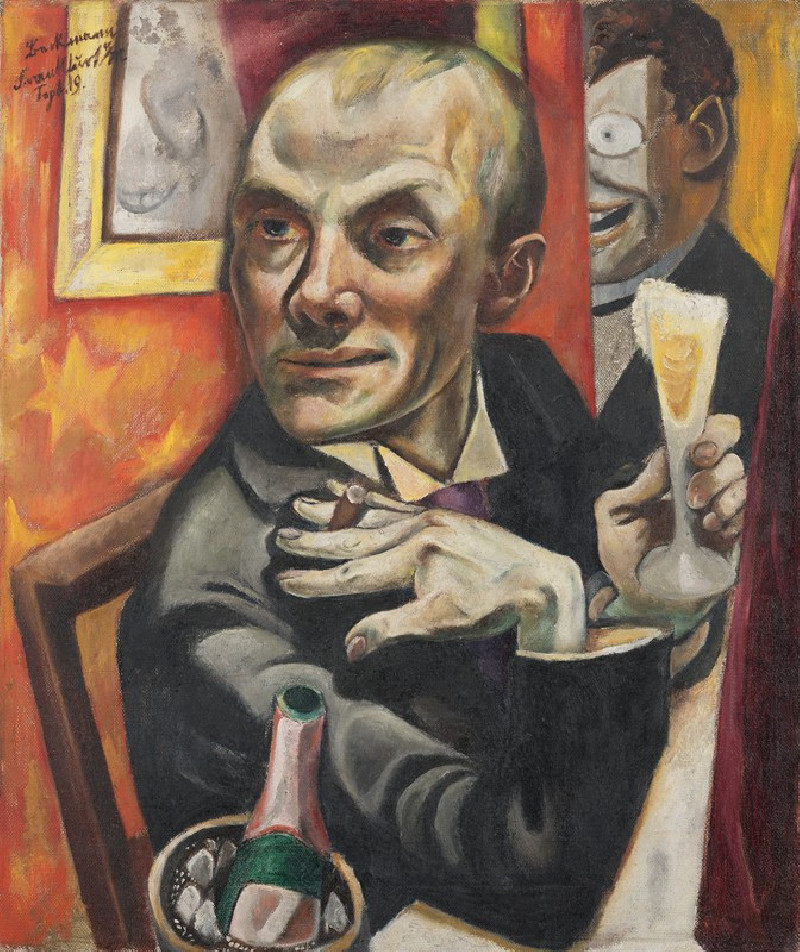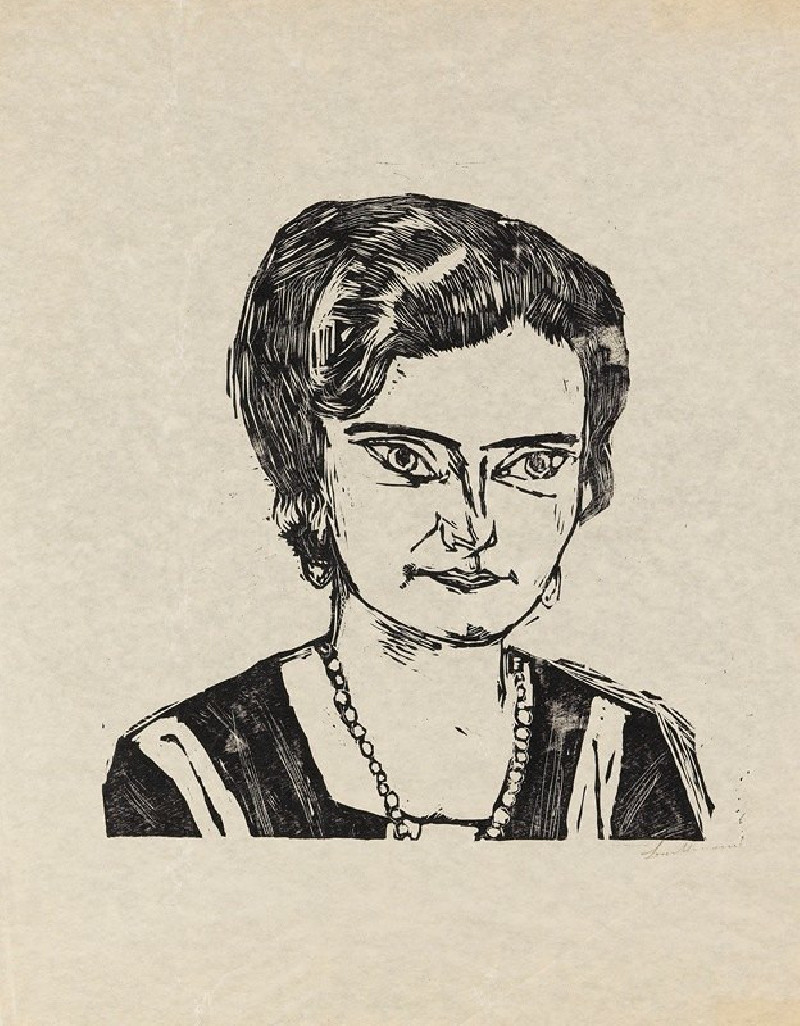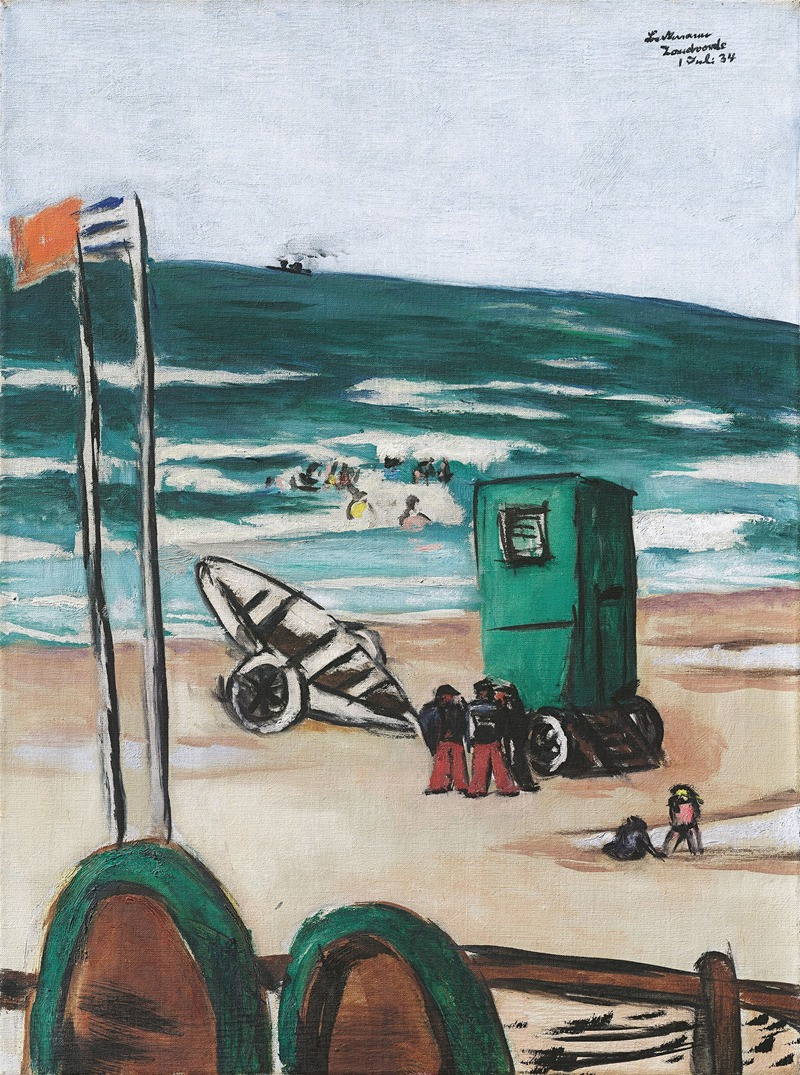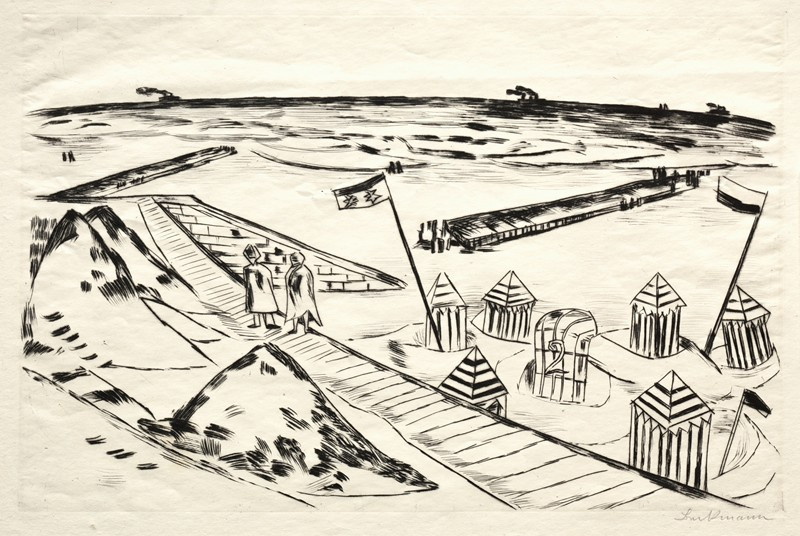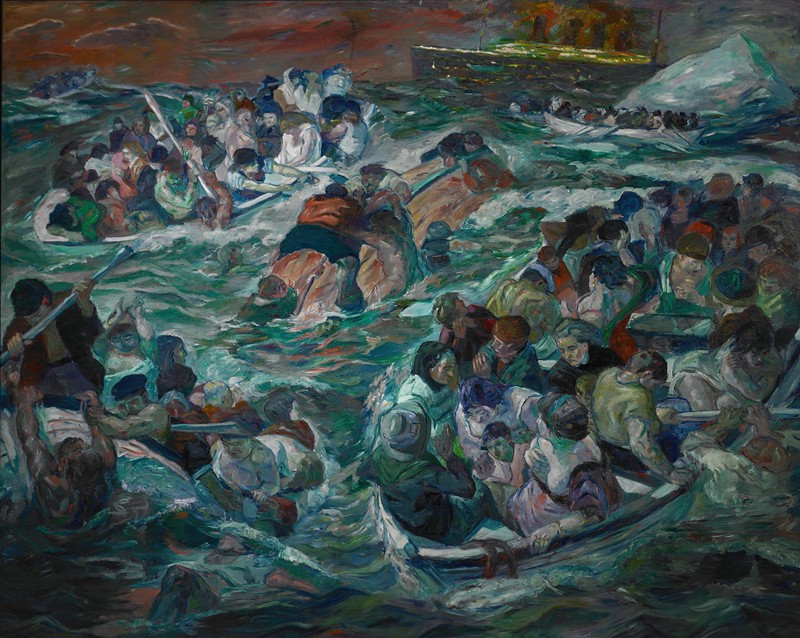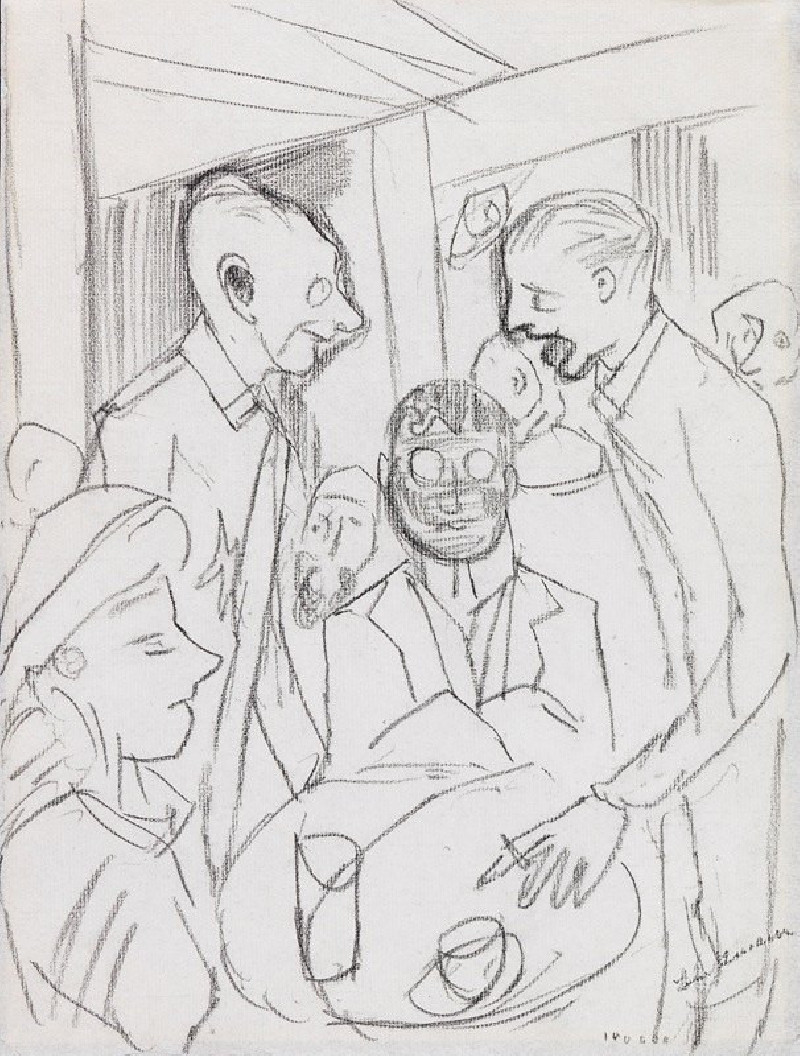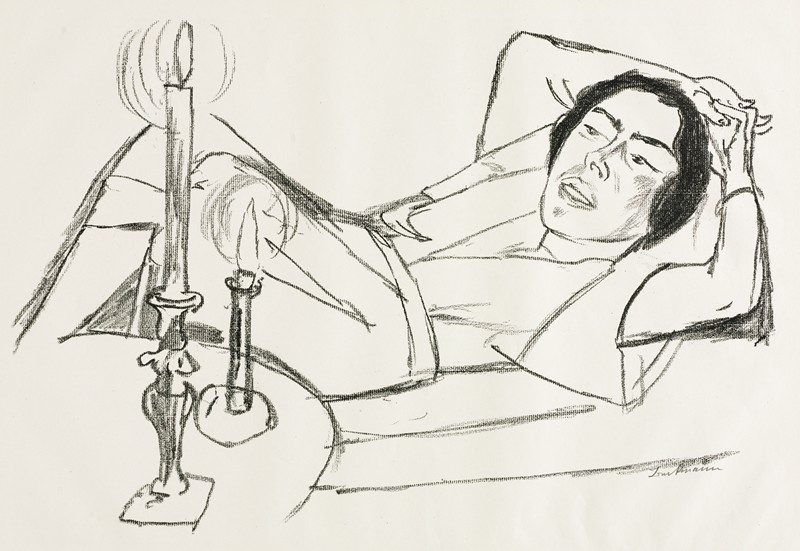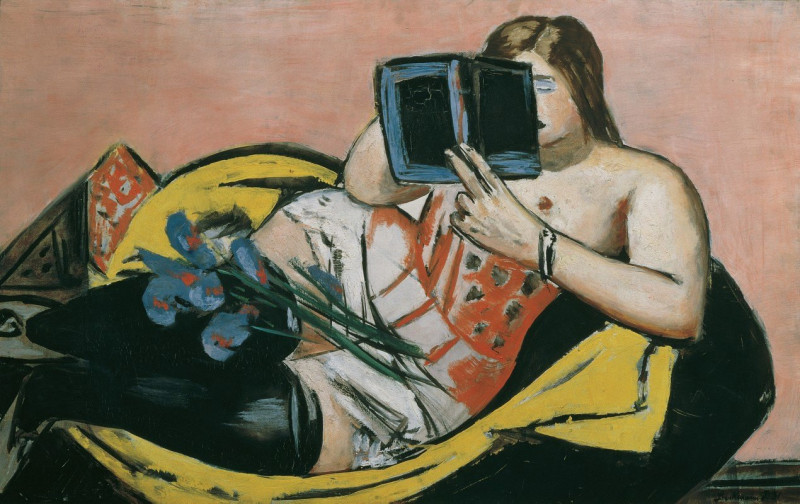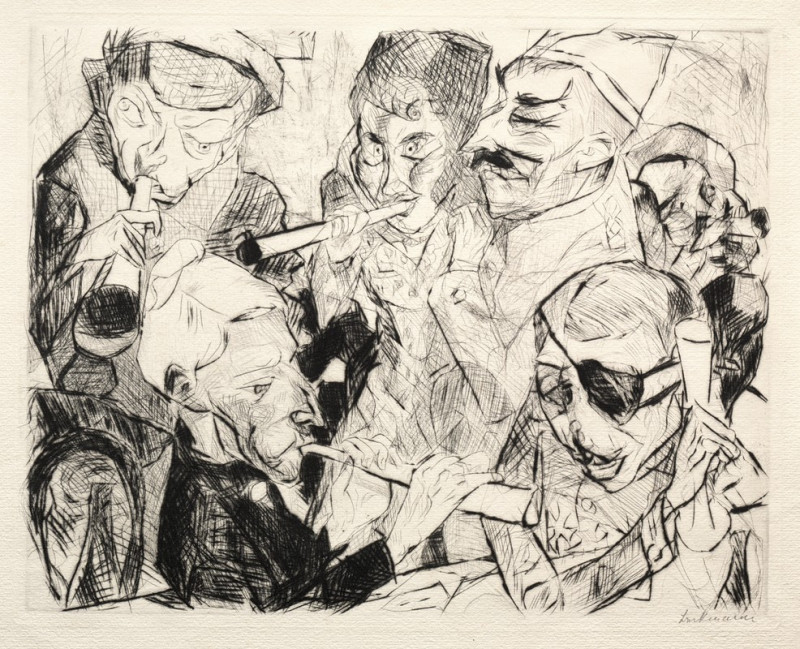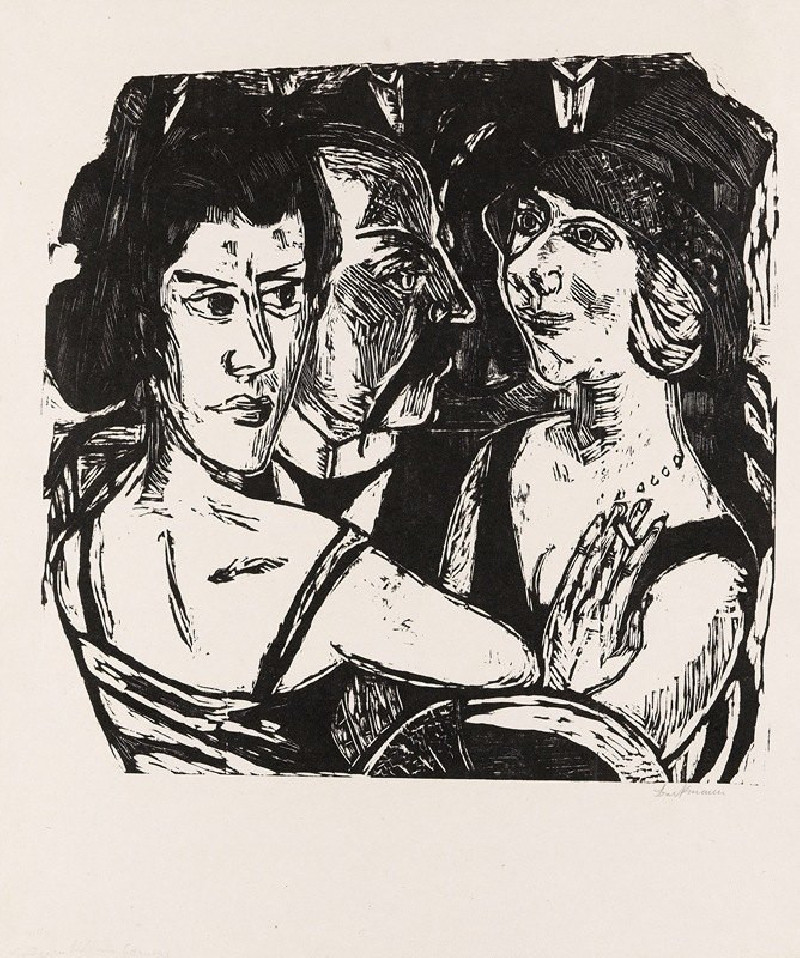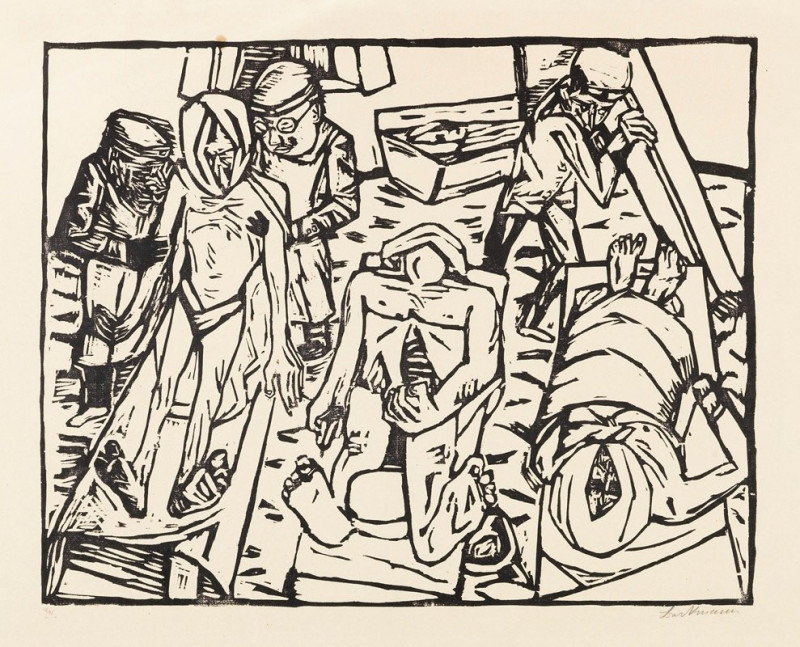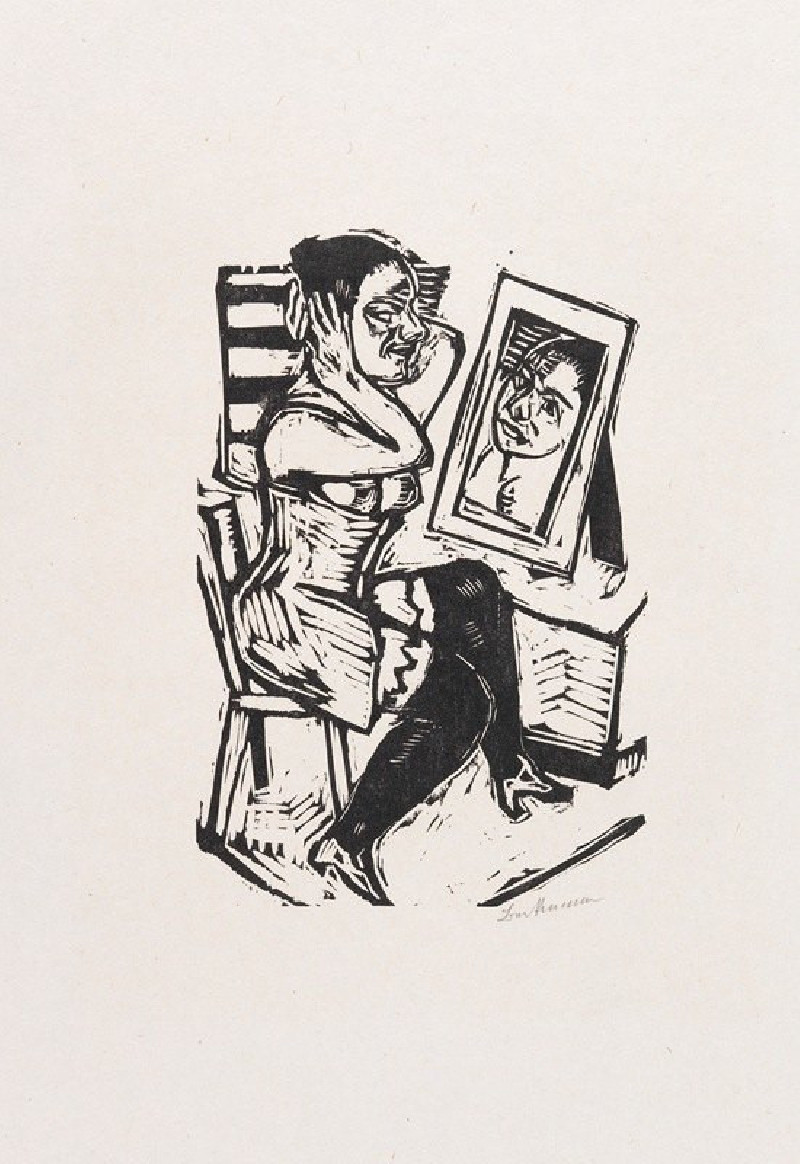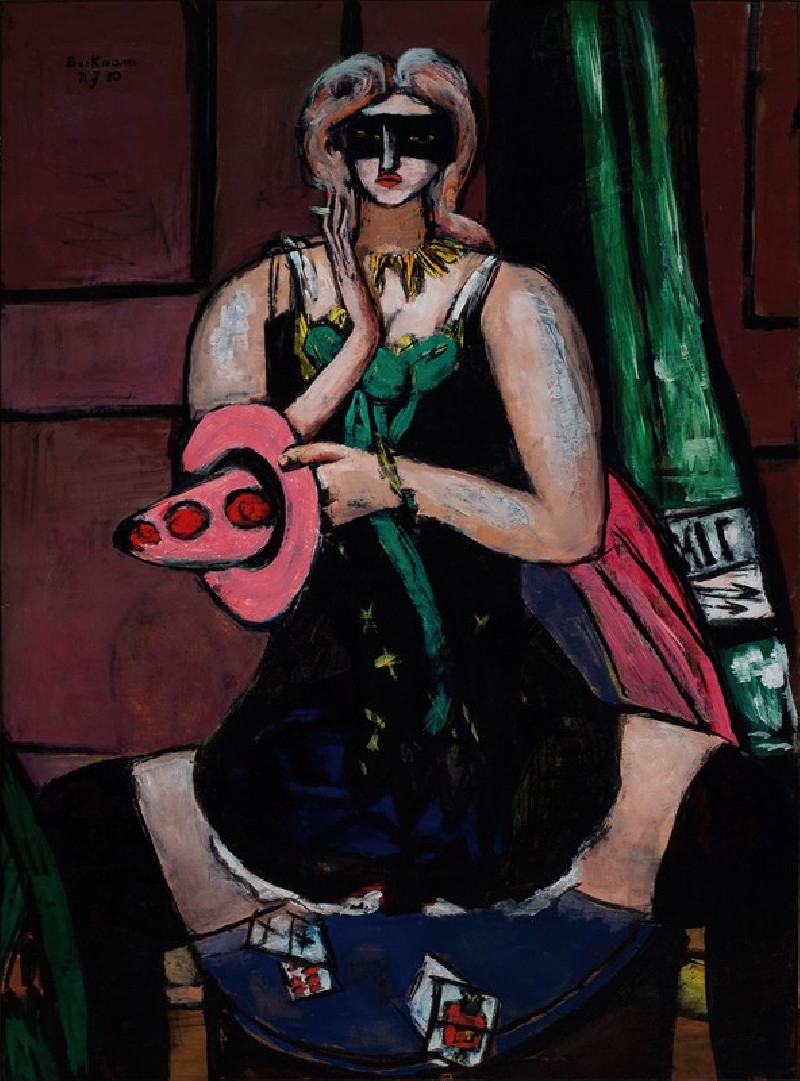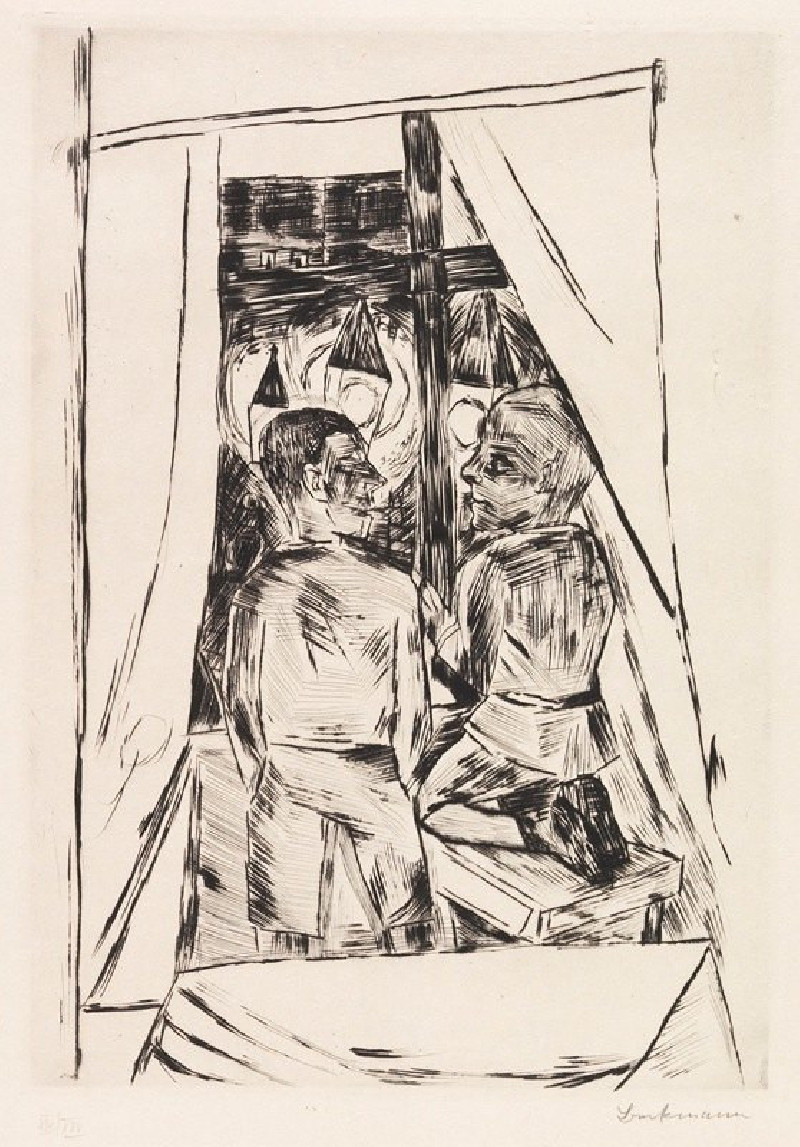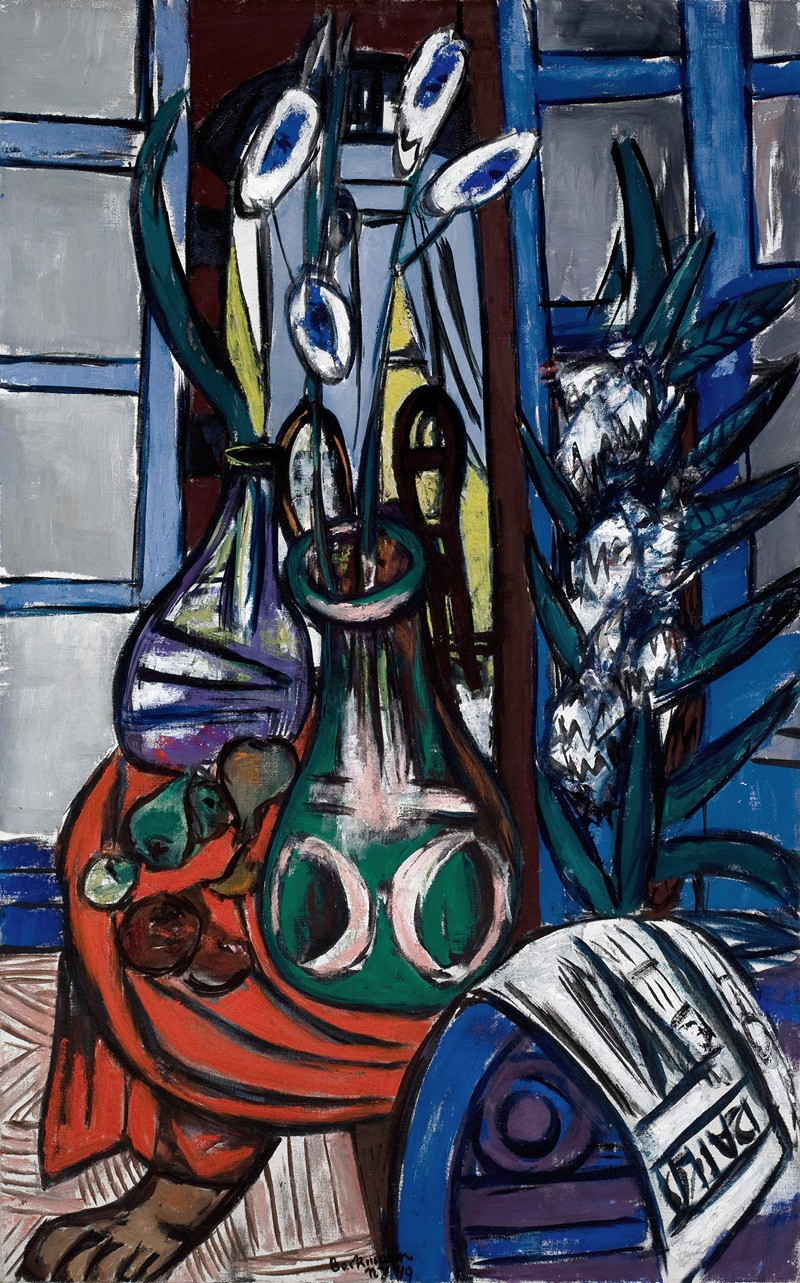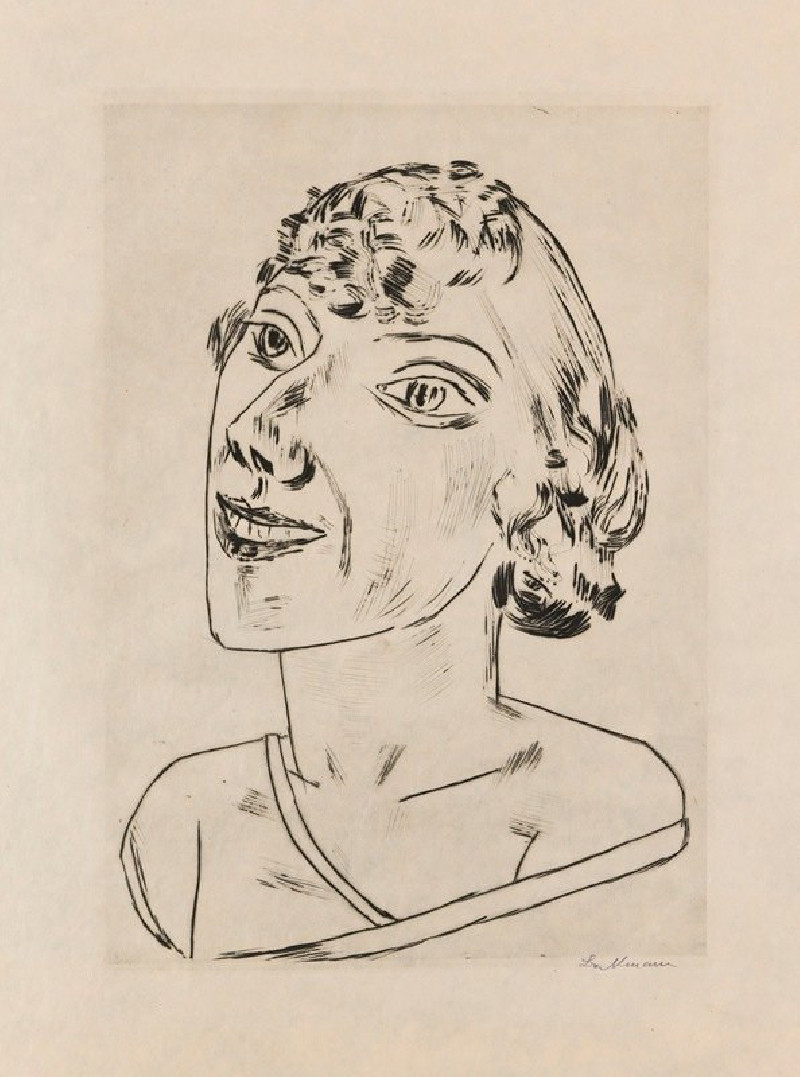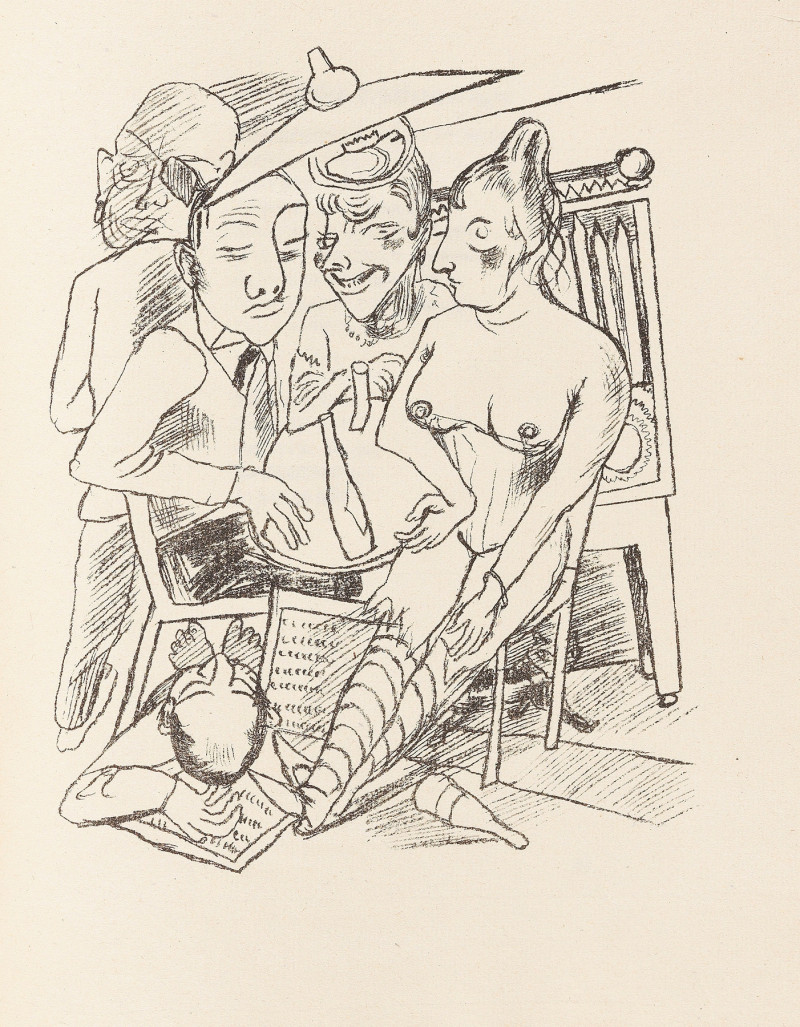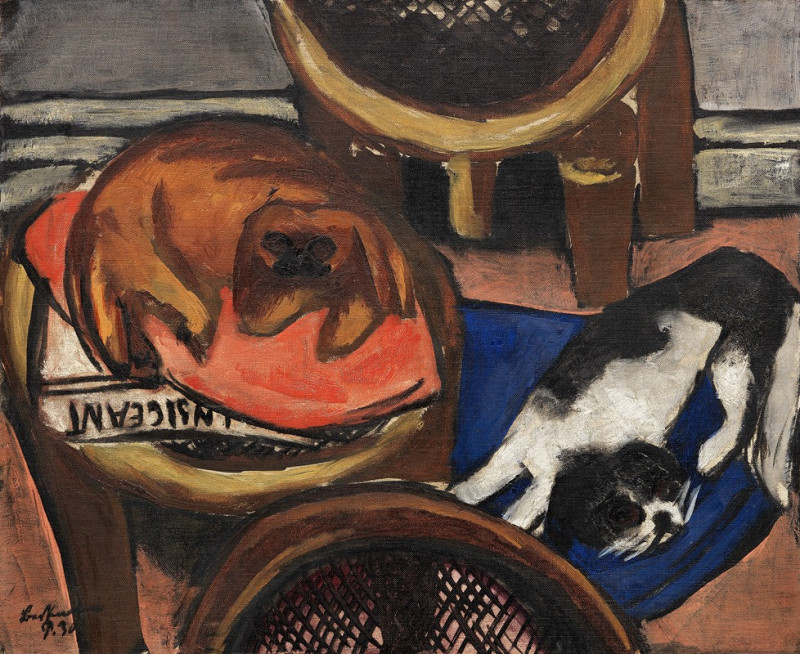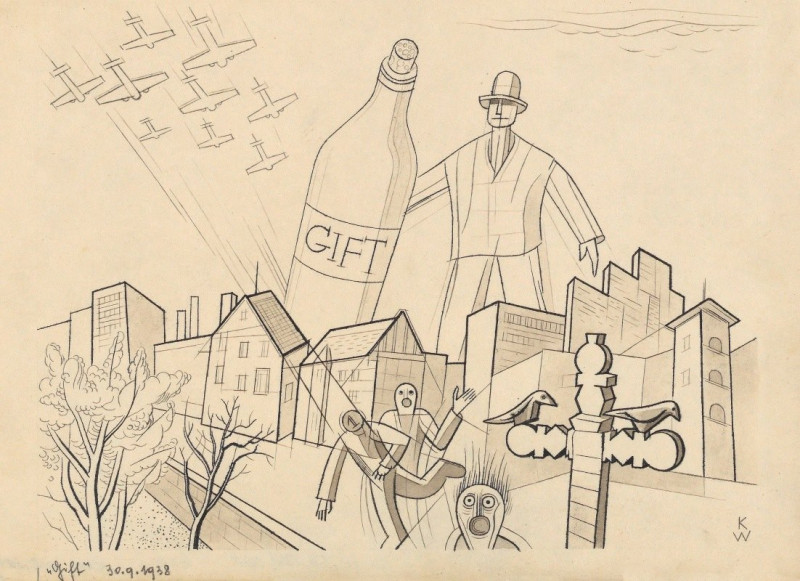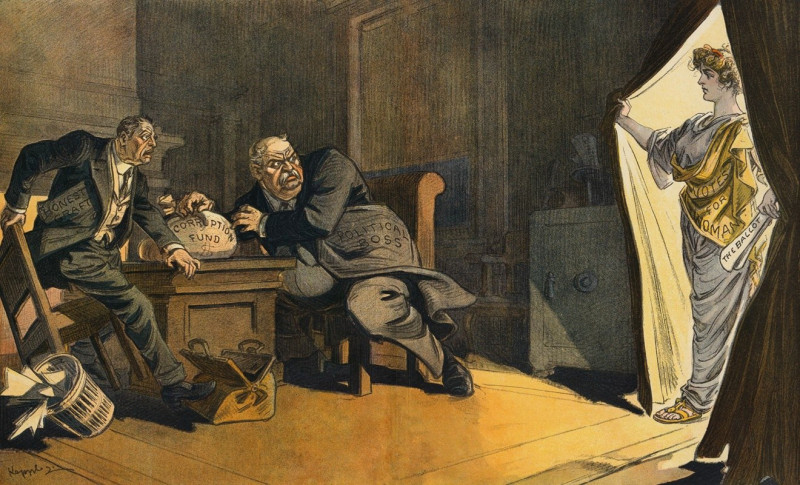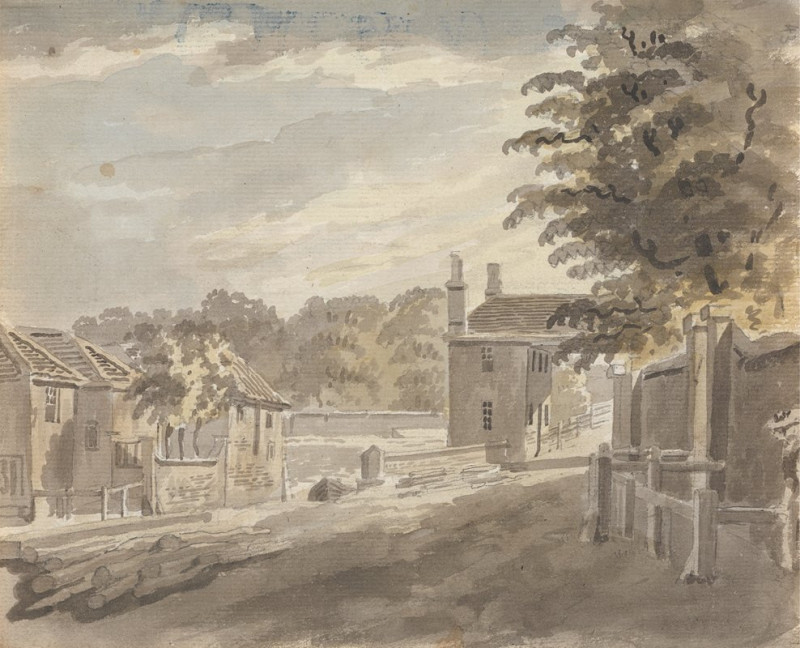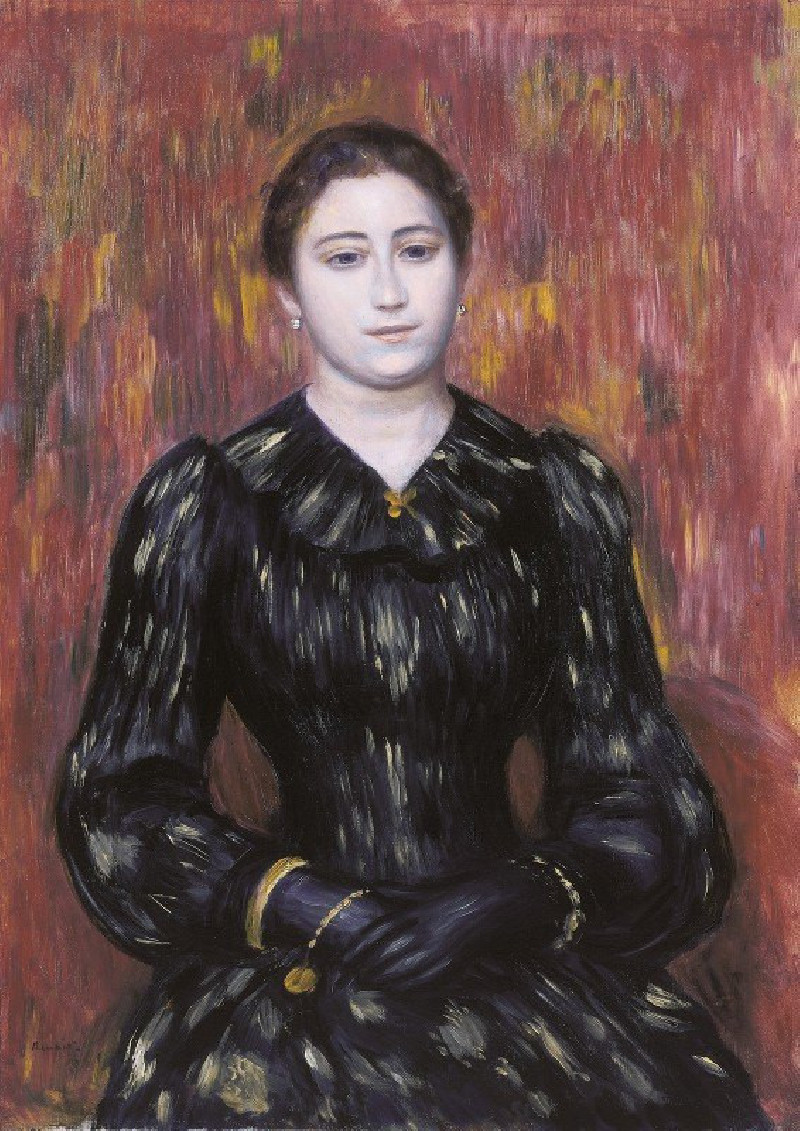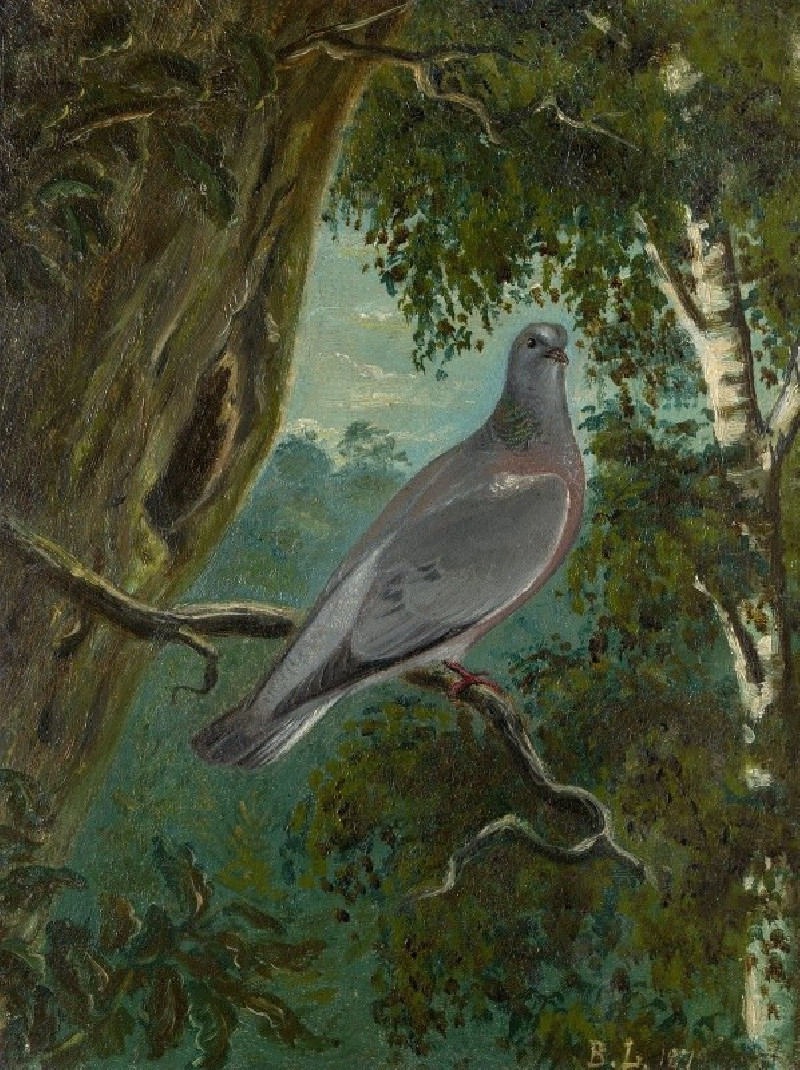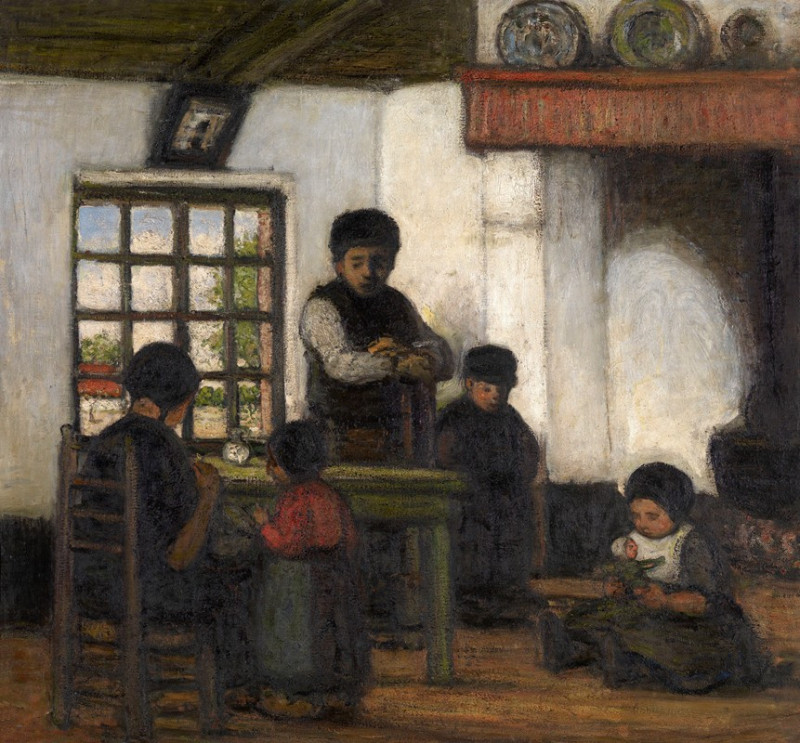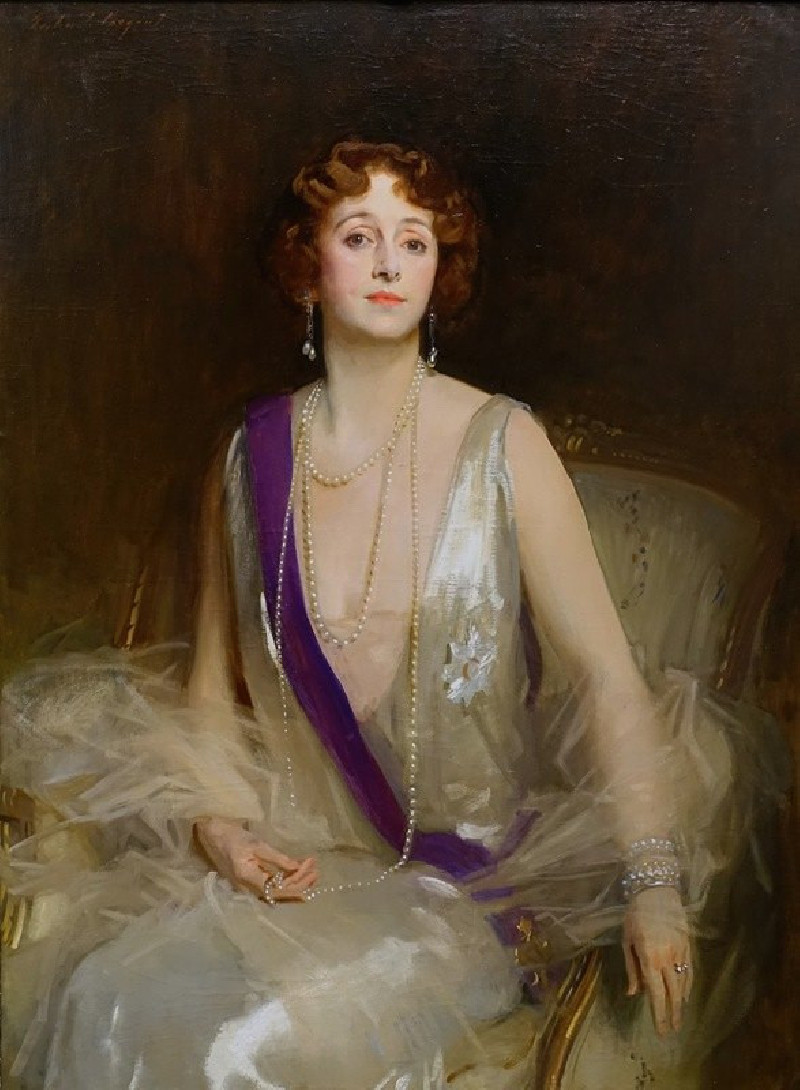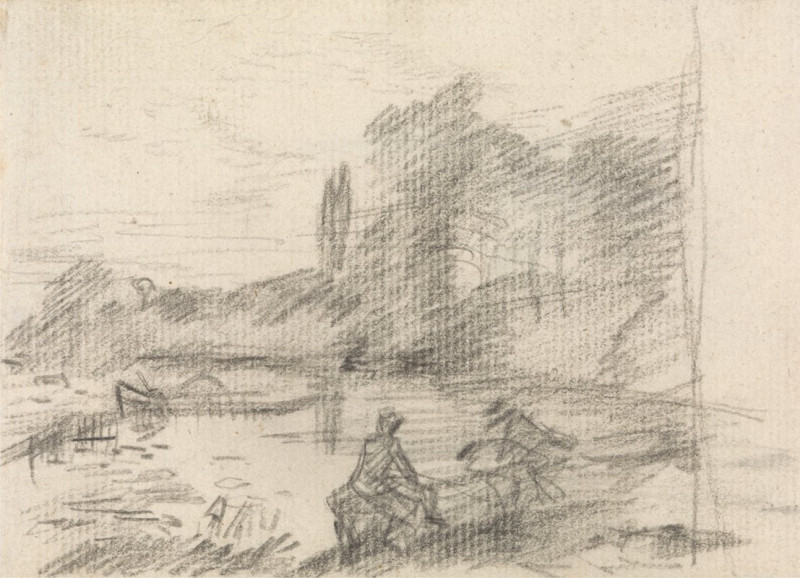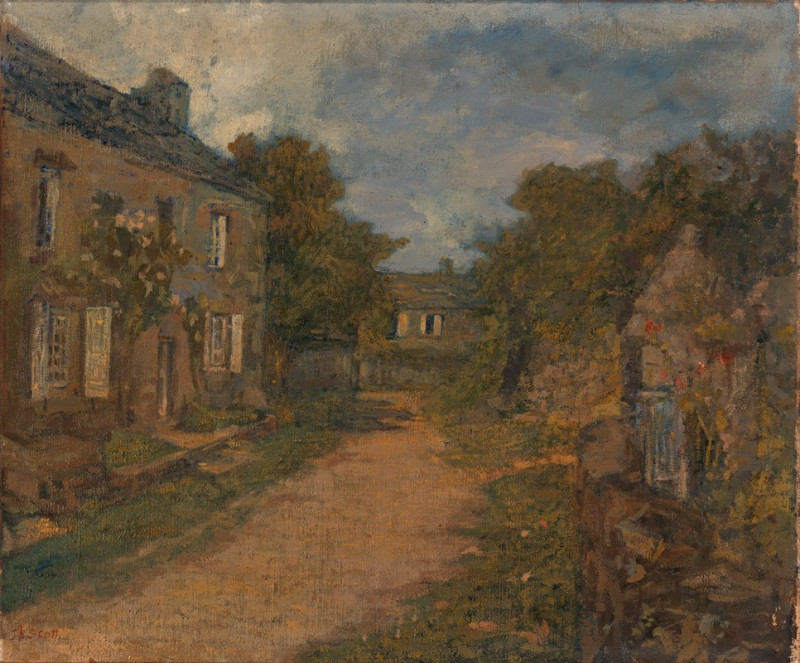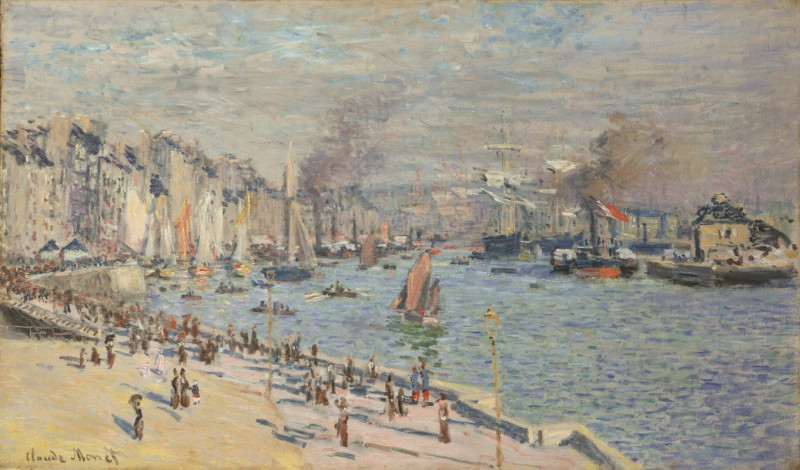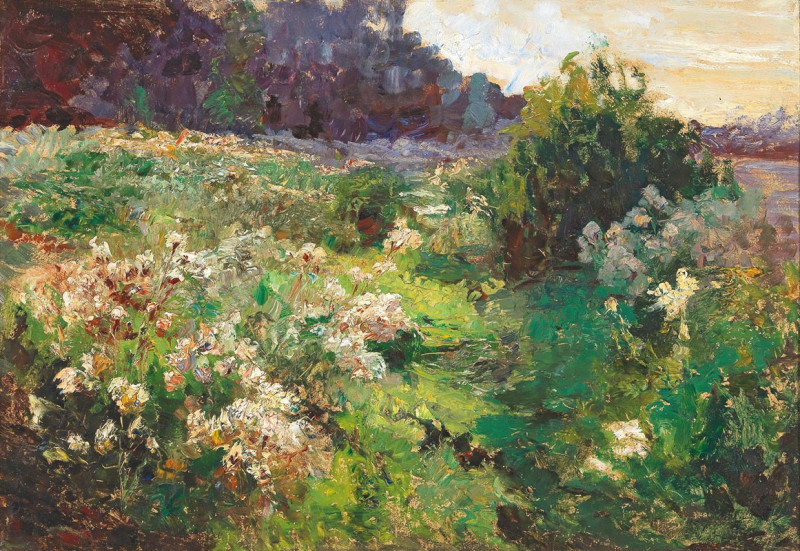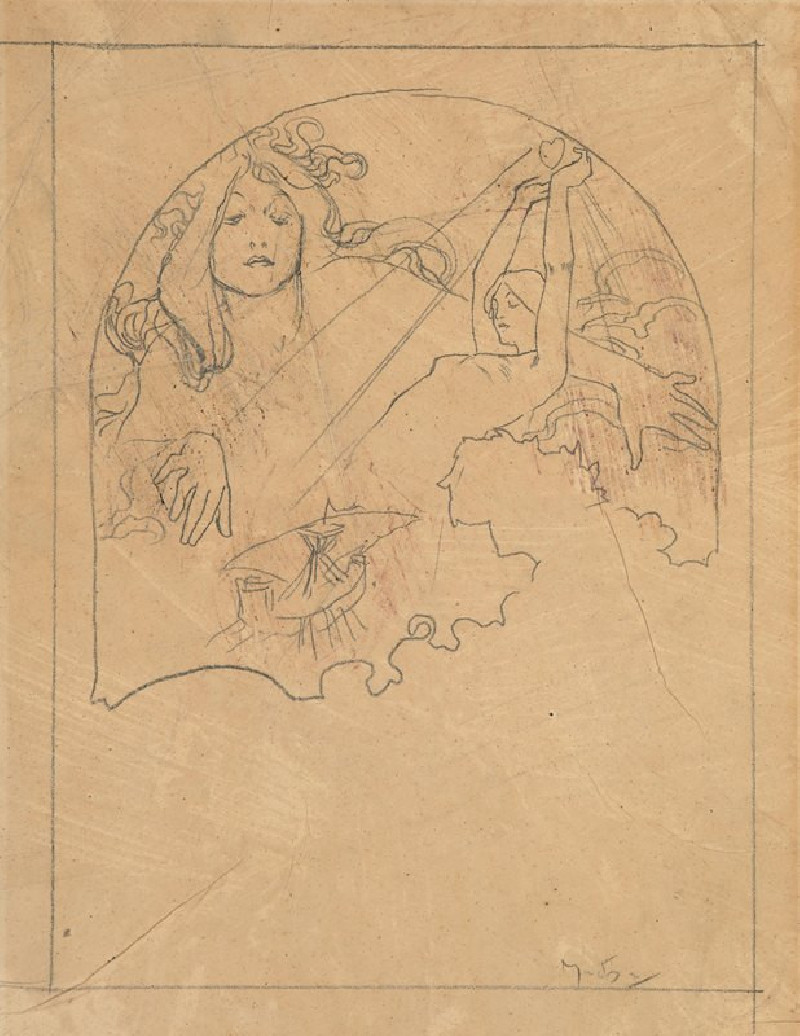Holländischer Radfahrweg (1940-1942)
Technique: Giclée quality print
Recommended by our customers
More about this artwork
Max Beckmann's painting "Holländischer Radfahrweg," completed between 1940 and 1942, offers a compelling glimpse into the unique style and emotional depth that define the German Expressionist movement. This artwork is not only a visual depiction of a landscape but also an exploration of mood and atmosphere through its vigorous brushwork and vibrant colors.The painting portrays a cycling path in the Netherlands, a subject suggesting movement and transition, which may echo the turbulent times during which it was created. The path cuts a diagonal across the composition, leading the viewer's eye through a dynamic landscape of lush greenery and rich, earthy patches. The bold outlines and exaggerated forms of the trees amplify the intense, almost brooding character of the scene. Beckmann's use of deep greens and blues alongside contrasting whites and yellows captures the play of light and shadow, lending the scene both depth and drama.The emotional resonance of the painting is palpable, as Beckmann uses the landscape to convey a sense of isolation and introspection. This might reflect his own experiences and sentiments during the years of World War II, making "Holländischer Radfahrweg" not just a depiction of a physical space but an intimate portrayal of inner life during times of external chaos."Holländischer Radfahrweg" is a testament to Beckmann’s mastery in manipulating form and color to convey complex emotional states. It is a profound example of how art can capture the essence of both a place and a period through the lens of personal experience and artistic expression.
Delivery
Returns
Actors, cabaret singers, heroes and thugs in a harsh postwar urban life by German artist Max Beckmann (1884-1950). His paintings show boldness, lust, and pain through delineated figures. The Nazi rule forced Beckmann to resign as an art professor and declared his artworks as degenerate. He later left for America where he lived in exile, yet remained active as an artist.

